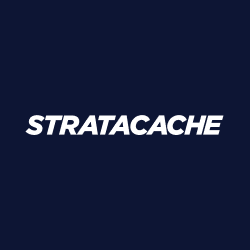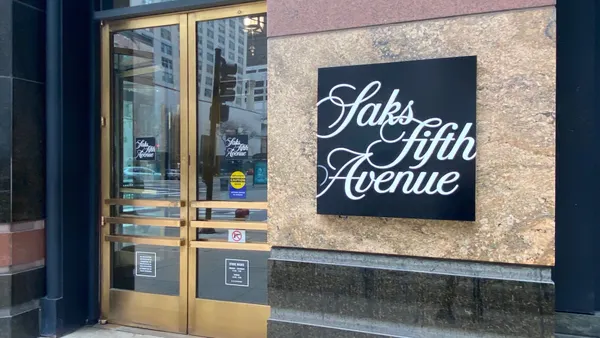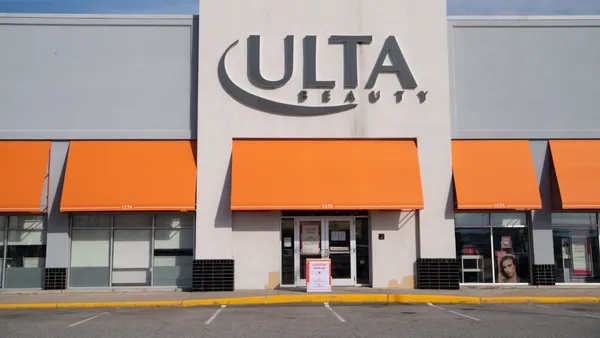Dive Brief:
-
Michael Kors Holdings has agreed to acquire Italian luxury fashion house Gianni Versace for €1.83 billion or about $2.12 billion, the companies said in a press release Tuesday. The total price tag is less than the $2.35 billion widely reported earlier.
-
Once the deal closes, the company will rebrand as "Capri Holdings Limited," named for the island off Italy's Amalfi Coast, according to a company press release. Versace will join Jimmy Choo, which Kors acquired a year ago for roughly $1.2 billion, and Michael Kors' eponymous banner as the new company's three pillar brands.
-
Donatella Versace will remain as the brand's creative director, the company also said. Versace, with her brother Santo and daughter Allegra, took over the company in 1997 after the murder of Gianni Versace. All three will become shareholders in Capri Holdings Limited, she said in a statement.
Dive Insight:
Michael Kors is taking on an iconic European brand, vastly expanding its international reach in the process. But the transformation won't be easy, analysts said Tuesday.
"While [Versace] is iconic and high-profile, there is a lot of work to be done to position it for higher growth,"GlobalData Retail Managing Director Neil Saunders said in comments emailed to Retail Dive. "This will absorb both time and money ... and has to be done in tandem with the ongoing efforts to put Michael Kors firmly on the right track." Saunders also noted that "synergy savings" were not a "core part" of the announcement, "which is perhaps a recognition of the fact that spending will be needed to create superior growth."
The company said that its goals for Versace include growing the brand's revenue to $2 billion, boosting its store count to 200 from 300, accelerating its digital and omnichannel efforts, and expanding men's and women's accessories and footwear to 60% of revenues from 35%.
That will advance the company overall, though Kors emphasized its long-term view, including eventually growing the new Capri's revenues to $8 billion and diversifying its global footprint. That entails shrinking its proportion in the Americas from 66% to 57%, inching up to 24% in Europe from 23% now, and eventually growing from 11% in Asia to 19%.
It helps a lot to have Donatella Versace staying on, and it's a good sign that the family is invested in Capri, according to Saunders, who described Versace as "instrumental in acting as both the face of the label and the heart and mind behind many of its creative successes."
As expensive as the work needed at Versace promises to be, it's nevertheless an opportunity for growth, according to a note from Cowen & Co. analyst Oliver Chen, who pointed to opportunities particularly in Asia.
"[T]he online capabilities are behind with respect to social media, fashion and lifestyle content, shipping speed, and customer engagement," Chen said. "We also believe key strategies could include: the reduction of off-price sales and simplification of the brand structure and tiering."
The runway in online engagement shows up in research from SimilarWeb, which found that there are more searches for Michael Kors by some 890,000 monthly visits compared to versace.com's 170,000, with Kors shoppers lingering longer. But, "Versace has a stronger hold over younger audiences, with 39% of their total traffic from the 18-24 market (their strongest demographic)," according to SimilarWeb.
The company's name change is a reflection of Michael Kors' global ambitions in high fashion, something that Tapestry, née Coach, appears to be pulling off after its rehabilitation of its Coach brand and the acquisition of Kate Spade. "It is a subtle change, and one many consumers may not notice, but in our mind, it underlines the intention of the group to become a luxury powerhouse," Saunders said.












